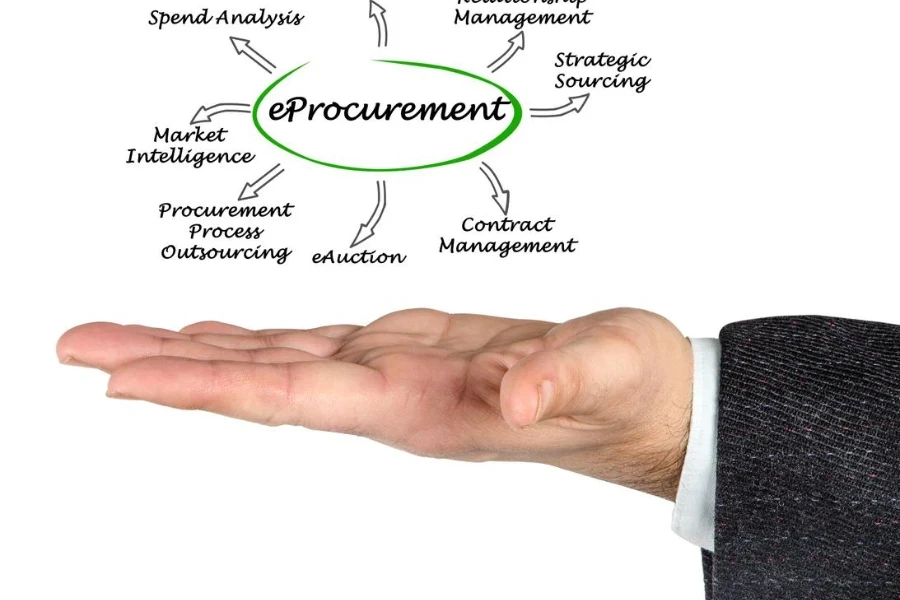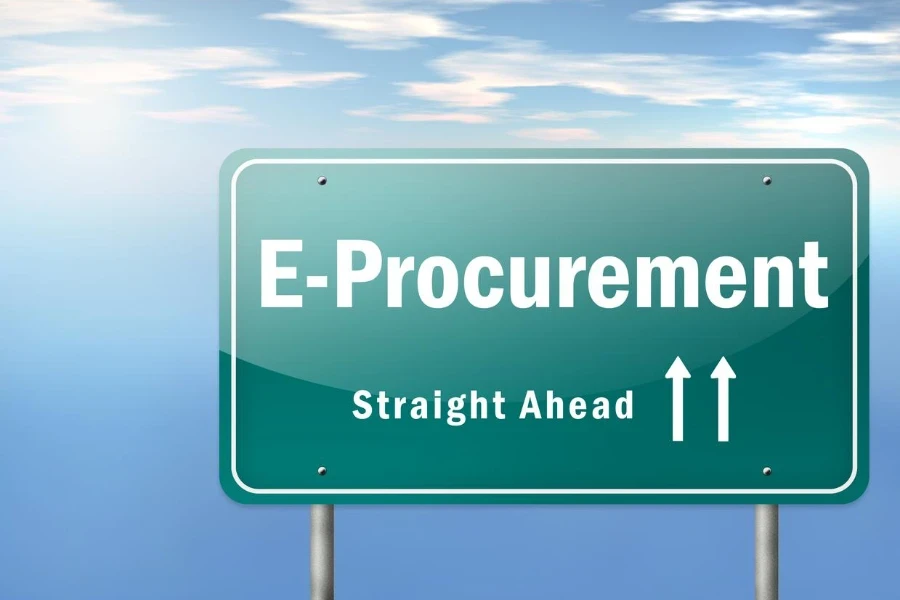In the ever-evolving landscape of digital commerce, e-procurement stands out as a transformative force, reshaping how businesses manage their purchasing processes. This comprehensive guide delves into the essence of e-procurement, offering insights into its mechanisms, benefits, challenges, and future trends. By breaking down complex concepts into digestible explanations, we aim to provide you with a clear understanding of e-procurement and how it can benefit your business operations.
Table of Contents:
– Understanding e-procurement
– The benefits of e-procurement
– Overcoming challenges in e-procurement
– E-procurement technologies and tools
– The future of e-procurement
Understanding e-procurement

E-procurement, or electronic procurement, refers to the process of purchasing goods and services through digital platforms. This method streamlines the traditional procurement process, making it more efficient and cost-effective. By automating tasks such as order placement, invoicing, and payment processing, e-procurement systems reduce manual effort and minimize errors.
The core components of e-procurement include electronic catalog management, purchase order integration, and supplier management. These elements work together to create a seamless purchasing experience, enabling businesses to manage their procurement activities in a centralized, digital environment.
Adopting e-procurement offers businesses the opportunity to access a broader range of suppliers, fostering competitive pricing and innovation. Additionally, the data generated through e-procurement platforms provides valuable insights into spending patterns, helping companies make informed purchasing decisions.
The benefits of e-procurement

E-procurement systems offer a multitude of benefits that can significantly impact a business’s bottom line. First and foremost, they enhance operational efficiency by automating routine tasks, allowing staff to focus on strategic activities that add value to the organization. This automation also speeds up the procurement cycle, enabling faster turnaround times for purchasing goods and services.
Another key advantage of e-procurement is cost savings. By streamlining the procurement process, businesses can reduce administrative costs and take advantage of bulk purchasing discounts. Furthermore, e-procurement platforms often include tools for spend analysis, helping companies identify opportunities for cost reduction.
Improved compliance and transparency are additional benefits of e-procurement. Digital systems allow for better tracking of expenditures and adherence to company policies and regulatory requirements. This enhanced oversight helps mitigate the risk of fraud and ensures that procurement activities align with organizational goals and standards.
Overcoming challenges in e-procurement

While e-procurement offers numerous advantages, businesses may encounter challenges when implementing and using these systems. One of the primary obstacles is resistance to change. Transitioning from traditional procurement methods to a digital system requires a shift in mindset and culture within the organization. Training and change management initiatives are crucial to ensure a smooth transition and to maximize the adoption of the new system.
Data security and privacy concerns also pose significant challenges in e-procurement. As with any digital platform, the risk of data breaches and cyberattacks is a pressing issue. Businesses must prioritize the security of their e-procurement systems, implementing robust cybersecurity measures and ensuring compliance with data protection regulations.
Integration with existing systems and processes is another challenge that businesses may face. E-procurement solutions must be compatible with the company’s current IT infrastructure and capable of communicating with other business systems. Achieving seamless integration requires careful planning and may necessitate customizations or upgrades to existing software.
E-procurement technologies and tools

The landscape of e-procurement technologies and tools is diverse, with solutions designed to meet the needs of businesses of all sizes and industries. These tools range from comprehensive procurement platforms to specialized software focused on specific aspects of the procurement process, such as supplier management or spend analysis.
Key features to look for in e-procurement technologies include user-friendly interfaces, customizable workflows, and robust analytics capabilities. Integration capabilities are also essential, ensuring that the e-procurement system can seamlessly connect with other business applications, such as enterprise resource planning (ERP) and customer relationship management (CRM) systems.
Emerging technologies, such as artificial intelligence (AI) and blockchain, are also making their way into e-procurement solutions. AI can automate complex decision-making processes and provide predictive analytics, while blockchain offers enhanced security and transparency in transactions. These innovations promise to further enhance the efficiency and effectiveness of e-procurement systems.
The future of e-procurement

As digital transformation continues to accelerate, the future of e-procurement looks promising. Trends indicate a move towards more integrated and intelligent procurement ecosystems, where automation and data analytics play a central role. The adoption of AI and machine learning technologies is expected to increase, offering new opportunities for optimizing procurement processes and strategic sourcing.
Sustainability and social responsibility are also becoming integral considerations in e-procurement. Businesses are increasingly seeking suppliers that adhere to ethical practices and environmental standards, using e-procurement platforms to assess and manage supplier performance in these areas.
In conclusion, e-procurement represents a pivotal shift in how businesses approach purchasing, offering opportunities for increased efficiency, cost savings, and strategic sourcing. By understanding the key aspects of e-procurement and embracing the latest technologies, businesses can position themselves for success in the digital age.
Conclusion
E-procurement stands as a cornerstone in the digital transformation of business procurement processes, offering streamlined operations, cost efficiency, and enhanced strategic decision-making. As we look towards the future, the integration of cutting-edge technologies and a focus on sustainability will further shape the e-procurement landscape. Embracing these changes and overcoming associated challenges will be key for businesses aiming to leverage e-procurement for competitive advantage.




